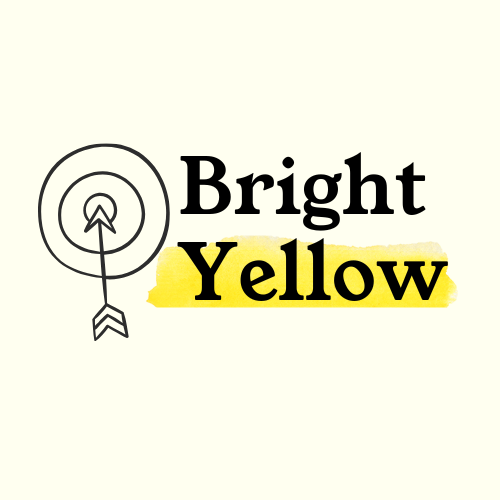I’ve reflected on 2024, now what?
As someone who works in the space of personal development, I have a love-hate relationship with this time of year. Prioritising time to step back and consider what’s worked and what hasn’t is something I deeply value, but struggle to know what to do with all that information.
With Bright Yellow, I want to make the practice of self-awareness a positive, purposeful, and practical experience. That means right-sizing the reflection so you have both enough information and the mental capacity left to do something about it.
Here’s a step-by-step guide to how I go about it.
Step 1: Pick a high and a low moment
Think back over your year.
Pick one high moment when you felt really great. You achieved something you didn’t think possible, or had a period of time where you just felt in flow.
Pick one low moment when you felt really rubbish. Something didn’t go as planned, or you had a prolonged period of feeling low motivation, sluggishness, and lacking drive.
Step 2: Define what actually happened
Reflect on each moment separately, and write down exactly what was happening for you at the time.
Use the three pillars of Mindset, Environment, and Behaviours to help you identify the specifics.
Mindset: e.g. I was feeling confident. I was doubting myself. The voice in my head was really critical during this time. I had told myself it wasn’t worth trying.
Environment: e.g. The house was a total mess. I listened to my favourite song on the walk to work. I’d gone for a walk with an old friend at lunch. There was so much traffic, and I heard heaps of sirens.
Behaviours: e.g. I was smiling a lot, and making jokes. I didn’t really speak up in the meeting, keeping my opinions to myself. I started speaking to a stranger in the coffee shop queue.
Step 3: Identify the patterns
Consider the factors that led to the high moments and the low moments. What patterns do you find?
Consider all aspects of your life that could influence your mindset, your environment, or your behaviours. Some helpful prompts below:
Social e.g. relationships and belonging
Physical health e.g. food and exercise
Mental e.g. stress levels, emotional wellbeing
Spiritual e.g. beliefs or purpose
Cultural e.g. family or broader community
Financial e.g. daily budget or broader wealth
Write down the patterns you find in the factors that influenced your high and low - even if it’s only one small thing, that’s HUGE when it comes to a learning.
Here’s my example:
In 2024, people were a huge factor in how I felt.
My high moment showed me I thrived when surrounded by people I cared about, regularly - the business was getting traction, I was making new connections, and it genuinely felt like a positive cycle.
My low moment showed me to be at my worst when I was alone, living in a new place without anyone around to speak to, and sat at home staring at my screen.
Step 4: Apply your learning
Think about what you’ve got planned in the coming weeks. Perhaps it’s a big meeting you want to be on top form for, or you’ve got a stressful house move and need to get through it without driving your partner crazy.
Use these patterns as a chance to make things easier for yourself.
Here’s my example:
The next few months I’ll need to give a lot of energy to the business, but financially I can’t afford to stay in London, where I’ve got a good support network.
I need to be in an environment that I can afford, but that gives me energy in return. Thanks to this, I know that I need to be around people I already know, who can re-charge me, and help me be at my best.
Step 5: Check-in with yourself
Ask yourself in a few week’s time:
How did it go?
What did you notice about yourself?
How could you apply this to other areas of your life?
Rather than sitting and reflecting, running these specific, practical little experiments is going to give you information that you can actually use to help yourself in 2025.
When everyone else goes big, go everyday tiny
At Bright Yellow, it’s our mission to transform your relationship with work through practical, purposeful, and positive reflection. It’s big transformation, but built in the everyday tiny.
